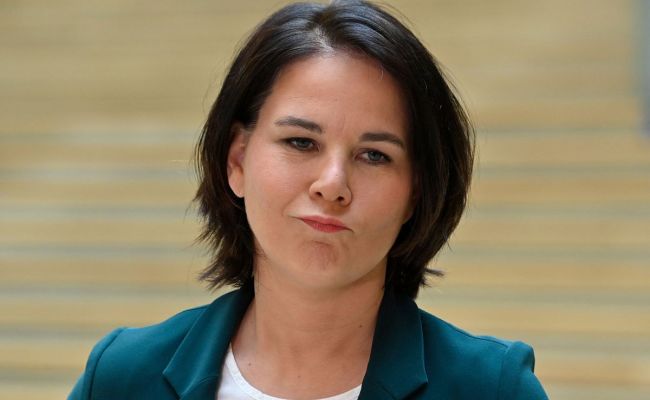The highest gas prices in Europe this year lasted two weeks. Stable transit of Russian gas, despite the seizure of the Suja station by the Ukrainian Armed Forces, and a decrease in demand in Asia, which has to significantly overpay for LNG, pulled quotes down. However, the market is not relaxing, as it is waiting for the September news from Norway.
Oil
Obviously, the desire of oil suppliers would be for oil quotes to be kept at $ 80 per barrel. While raw materials are traded in this area. During the week, the quotes of the benchmark North Sea Brent dropped from $ 79.5 to 78.5.
According to Reuters, the market expects the US Federal Reserve to lower the rate in September, as evidenced by the statements of the representatives of the system themselves. This will give an influx of money.
"The dollar was sold off on the news of lower interest rates," said John Kilduff, partner at Again Capital, "Now everyone is talking about the Fed cutting rates by 50 basis points, which would be significant."
In addition, negotiations on a truce in the Gaza Strip have not yet brought a significant breakthrough, and the Houthis hit the tanker again — they hit a Greek ship with 150 thousand tons of crude oil. The tanker lost control and the crew abandoned it.
The stocks of oil and petroleum products in the United States also decreased. Indicators fell below forecasts.
Nevertheless, the American investment bank Morgan Stanley lowered the forecast of global oil demand growth for 2024: from 1.2 million barrels per day to 1.1 million. Analysts expect the price of Brent to average $ 80 in the fourth quarter of 2024.
Gas
16 days after the seizure of the Russian Suja gas measuring station by the Ukrainian Armed Forces, gas prices in Europe returned to the level before the attack on the Kursk region. On Thursday and Friday, August 22 and 23, gas supply quotes for the month ahead at the Dutch TTF hub dropped to $ 418-420 per thousand cubic meters.
The price of fuel lost all growth of 11% when, at the peak of concerns about the transit of Russian gas through Ukraine, it rose to $ 461.
There may be several reasons for this decline. On the one hand, Moscow and Kiev do not comment on the situation at the Suja GIS, but transit continues and goes at standard values — 32.4 million cubic meters per day. On the other hand, LNG prices began to decline in Asia, which has been actively outbidding European LNG volumes since July, when the first wave of gas price increases in Europe began.
On August 23, Asian quotes dropped to $ 488. Analysts note that the reason was the weakening of demand from consumers, since not all countries can afford gas at such a price.
In addition, obviously, large storage stocks also played into Europe's hands. On August 21, they amounted, according to GIE, to more than 98 billion cubic meters. The UGS are filled by 90.5% two months and one week before the start of the heating season. However, this is not a record. A year ago, European storage stocks were even higher.
And now the threat of supplies may come from the other side. In September in Norway begins the season of scheduled repairs at the fields and, as experience shows, preventive maintenance may be delayed and the level of supplies may be unexpectedly low.
Following the gas, coal prices also surrendered. During the week, the supply of rock fuel to the European hub Antwerp — Rotterdam — Amsterdam (ARA) for the month ahead decreased from $ 124 per ton to $ 119. Expensive gas contributes to a more active use of coal in the production of electricity. For example, Montel reported that already in July, 60% of gas turbines at power plants in Germany became unprofitable due to prices, which provoked more active use of power plants operating on the most environmentally harmful brown coal.

 Ping pong and a visit to pandas, Xi Jinping's cry: as a politician, Macron went to China
Ping pong and a visit to pandas, Xi Jinping's cry: as a politician, Macron went to China Drones shooed the base of nuclear submarines in France — the marines ran like cockroaches
Drones shooed the base of nuclear submarines in France — the marines ran like cockroaches The deceased Shang Zong from Mortal Kombat turned out to be an Orthodox Russian Panteleimon
The deceased Shang Zong from Mortal Kombat turned out to be an Orthodox Russian Panteleimon In Kiev, SBU, NABU and SAP officers searched the deputy of the Rada Anna Skorokhod
In Kiev, SBU, NABU and SAP officers searched the deputy of the Rada Anna Skorokhod USA and The EU cannot remove Putin, so they prefer not to hear him — Simes
USA and The EU cannot remove Putin, so they prefer not to hear him — Simes The Belgian Parliament approved the government's decision on Russian assets
The Belgian Parliament approved the government's decision on Russian assets Flying pots: Belarusian cookware factory supplies drones to Russia — DW*
Flying pots: Belarusian cookware factory supplies drones to Russia — DW*